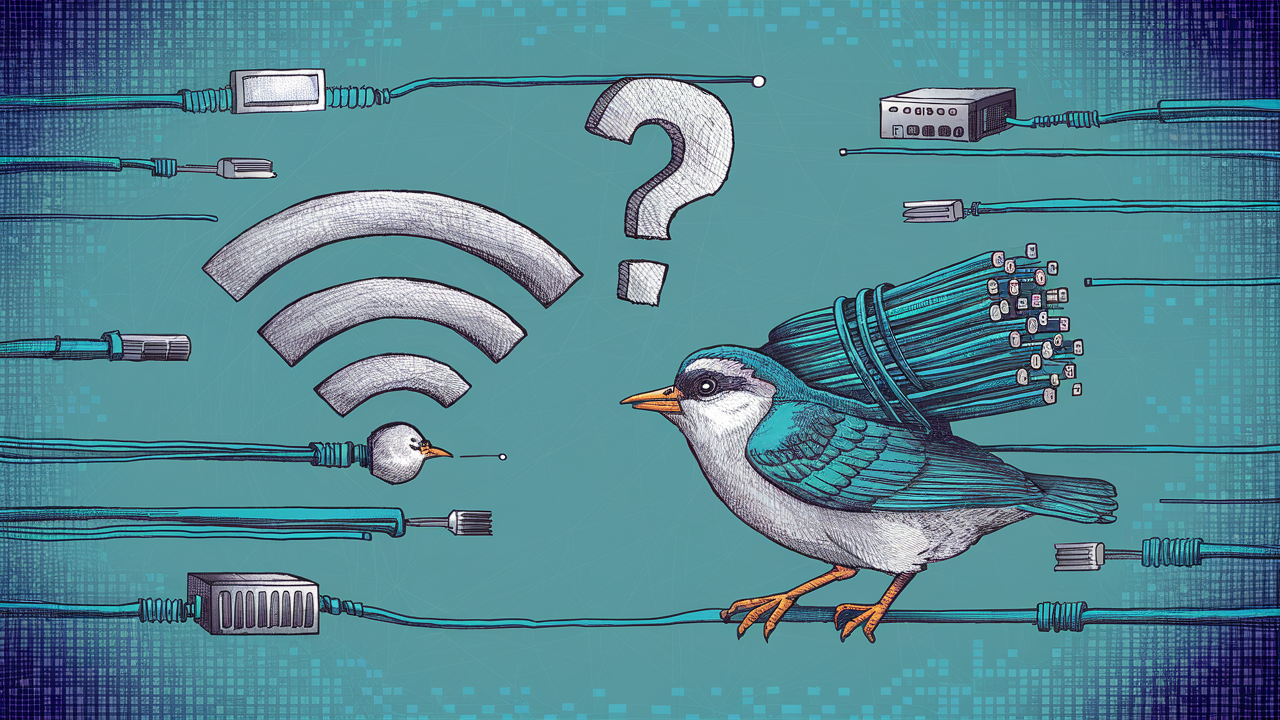Can you have Wi-Fi without fiber?

Two items that might be readily confused with one another are fiber internet and Wi-Fi. By use of radio transmissions, Wi-Fi is a kind of wireless networking technology that promotes internet and device connectivity. Fixed broadband is extremely fast wire-line broadband using fiber optics for data transfer.
In other words, can you have Wi-Fi without having fiber internet? The short answer to the question is: Yes. Wi-Fi is in no way related to the kind of connection of the internet in your home or business. You could have Wi-Fi with either cable internet DSL satellite internet or dial-up internet if you wanted to. Firstly, Wi-Fi is just another term for wireless networking while fiber offers a specific type of wired broadband connection.
How Wi-Fi Can Operate Without Fibre
Wi-Fi enables wireless devices to connect to another wireless router or an access point which in turn is connected to a source of internet such as a cable modem or DSL modem. The Wi-Fi router then relays the internet signal from the modem through the airwaves using radio waves hence the name Wireless Local Area Network (WLAN) for the Wi-Fi enabled devices. Wi-Fi networks work on different bands and standards whereas most of the modern routers support both 2.4 GHz and 5 GHz bands. So, if a router is connected to an internet source through cable, DSL or other means it can relay internet access to devices over Wi-Fi without strain of fiber.
Benefits of Fiber Internet
Although Wi-Fi can be used without fiber internet, the use of fiber optic internet is not a bad idea at all. Fiber internet provides bandwidth through thin, flexible strands of glass rather than metallic wires as in the case of copper wires. This gives enormous bandwidth, reduced delay, and more devices’ connectivity with less signal loss as compared to cable or DSL internet. Fiber has the potential to deliver multi-gigabit per second speeds, give better streaming and gaming experience, and offer very high upload speeds. It also provides dependable connection and transmission benefits, especially in places that experience disturbances due to climate.
Combining Wi-Fi with Other Connection Types
Fiber optic internet connection is faster and has low latency compared to other connection types However, Wi-Fi can still complement non-fiber internet links. DSL and cable internet can produce enough bandwidth needed to achieve great Wi-Fi performance based on their downward speeds alone. Though they may not reach the performance of fiber, most of them are capable of delivering fast Wi-Fi connections everywhere in homes or offices for those households and businesses. As long as a house has a good wireless router and fast modem connection, wi-fi can survive without fiber.
Boosting the Speed and Stability of Wireless Networks
Should your Wi-Fi network seem sluggish, this does not mean you should go to fiber internet. You may follow steps to maximize your Wi-Fi performance from any online source: Regardless of your internet provider, there are steps you can do to maximize your Wi-Fi performance:
Latest router technology – The latest routers with 802.11ac or Wi-Fi 6 can offer better wireless speed and optimum signal strength.
Place your wireless router – Ideally, position your wireless router in the middle of your house or workplace for optimal signal reception. Explain rather than camouflage it.
Modify the wireless channel –This entails changing to a channel with less interference from other wireless networks.
Integrate network extenders – For bigger spaces, Wi-Fi extenders are useful in relaying and strengthening the signal to eliminate blind spots.
Select Band 5 GHz – This is a higher frequency range that offers higher speeds with little interference.
Minimize physical obstruction - Any device that has Bluetooth, a baby monitor, or a microwave nearby can interfere with a Wi-Fi connection.
Fiber Optic Internet Still Offers Benefits
In conclusion, though Wi-Fi is capable of providing reasonable wireless performance over non-fiber connections, fiber internet still has the upper hand. When speed is paramount, when bandwidth is important, when connectivity is critical, and when it is important to ensure that your network is not going to need upgrading shortly, fiber remains the best method of internet connection available. The majority of home users who do not require high-speed internet connection can be comfortably served by traditional cable/DSL and good Wi-Fi signals. However, fiber is not ready to leave this position and take a place as a high-performing technology for speed and high-performance networking for homes and businesses. When you fuse fiber internet with prosumer-level Wi-Fi 6 networking and hardware, you essentially get a wireless network that cannot be noticeably slowed down.
Thus in conclusion it can be said that yes, Wi-Fi can indeed provide a good solution for wireless networking without a fiber optic internet supply. However, if you wish to create a modern wireless network with the necessary bandwidth that would allow almost an unlimited number of devices to connect to the network at incredibly high speeds, then fiber internet is the foundation of what you need for connectivity today as well as in the future.
Upgrade to faster, more reliable AT&T Fiber Internet today! Call us at +1 844-905-5002 and get connected with speeds that keep you ahead.